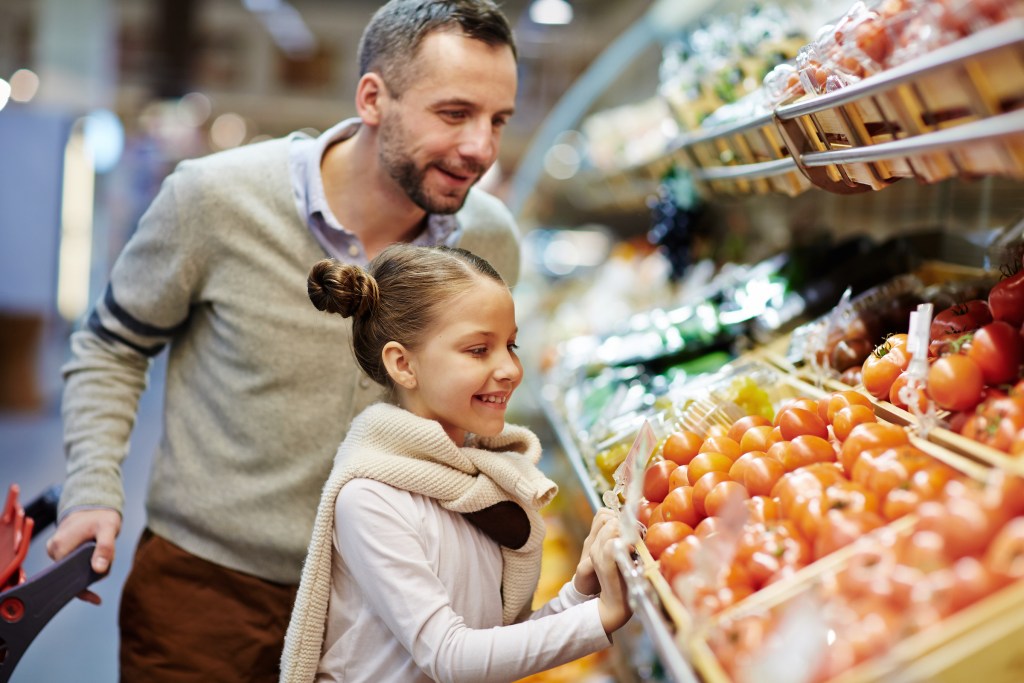We’ve all been there before: You buy some spinach intending to make a healthy salad or smoothies later in the week, and when you go to the fridge to fetch it, you find slimy, brown goo in the bottom of the bag. So you toss it. Or maybe you buy a bag of avocados, anticipating making guacamole just a few days later, but when you slice them open, you find just a bunch of brown mush.
Not only are these incidents resulting in wasted food and fewer healthy, fresh foods ending up in your family members’ bellies, but they’re also costing you a fair amount of money. You might as well just toss a few five-dollar bills in the trash.
Luckily, there are a few things you can do if you’re wondering how to keep food fresh longer, to save you some frustration and a little cash.

Start in the grocery store
Your quest for the freshest food has to start before you even get home. Whether you prefer to shop in your big-box grocery chain or at your local farmers market, whatever you’re buying, from veggies to veal, you want it to be as fresh as possible then, so you have more time once you get home. After all, if a head of lettuce is already on its deathbed when you buy it at the grocery store, you’re not really doing yourself any favors.
Rather than just toss your grocery items into your cart, when it comes to fresh items, from fruit to fish, give everything a close inspection. Look for odd discoloration or textures, anything that doesn’t look quite right. Don’t feel awkward about picking up your produce and giving it a squeeze. Do the potatoes feel a bit soft to the touch? Definitely don’t want ’em. Does that salmon fillet spring back against your fingertip? If so, it’s probably a safe bet.
Store things the proper way
How do you currently store your freshest foods? For many families, it’s simply a matter of habit that you store your veggies, fruits, meats, dairy, etc., as your parents did. But your habits could be causing you to lose a little (or a lot of) money, as you might not use up all those ripe tomatoes as quickly as your mom did, or you may have a tendency to simply forget those veggies languishing in your produce drawer. Out of sight, out of mind.
So, to save yourself some money and trouble, make an effort to store things the proper way. Potatoes and onions should be stored in a cool, dry, and dim space — many home cooks choose a lower, potentially unused shelf in their kitchen. Most fruits can be kept at room temperature for a week or so, but they’ll last even longer in the fridge. Some vegetables absolutely need the fridge, including leafy greens, broccoli, cauliflower, carrots, and most root vegetables (except for potatoes, of course).
Plan and prep ahead
If you don’t already, start meal planning in order to ensure you’re only buying produce and other fresh items that you need. Even if those ears of fresh summer corn look awfully tempting, if you’re not going to be eating corn on the cob anytime soon, you’d best pass them up.
If the thought of meal planning a week or two weeks in advance causes you a little stress, don’t worry. There’s no need to get super detailed and plan out every little dish for your family in advance if you don’t want to (though if you do want to, have at it; it certainly can’t hurt).
Instead, just make a short, dated list for yourself and stick it on the fridge or somewhere else in your kitchen where it’s easily visible. On the list, you can simply add the fresh items you purchased, with general plans of when you expect to eat them. Maybe you purchased some kale, and you know it’ll last about a week in your fridge’s produce drawer, so you make a note for yourself that sometime during this week, you need to make something with kale, whatever that might be.
All it takes is a little effort
Stop wondering how to keep fruits and veggies fresh! Avoiding fresh food waste is as easy as taking a few extra steps throughout your grocery shopping and cooking processes. Just be sure to only buy the freshest produce possible, store it correctly once you have it at home, and actually remember to eat it. Both your wallet and your family will thank you when they actually get to enjoy that avocado toast that you’d originally planned for weekend breakfasts, versus tossing the rotten avocados and settling for cereal.
Need a little extra help? Purdue University has put together an extensive chart of food-freshness estimates that not only includes fruit, veggies, and other fresh items, but also pantry staples.



